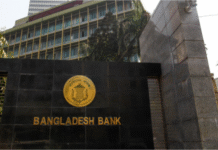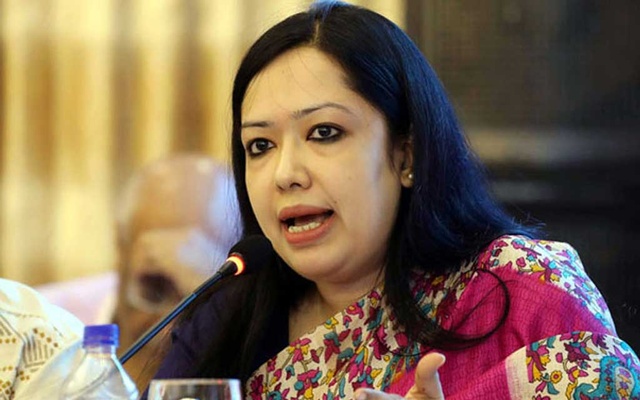
Highlights:
- Deposit growth in May lowest despite remittance and confidence gains
- Inflation easing, but income and job growth remain stagnant
- Private sector credit growth far below central bank target
- Public breaking deposits due to high expenses, low wages
- Cash outside banks surged, driven by Eid, inflation, distrust
- Reforms underway but deposit growth still limited by weak economy
Despite growing public confidence in the banking sector and a record influx of nearly $3 billion in remittances in a single month, Bangladesh’s deposit growth in May hit its lowest level this year, raising fresh concerns about the state of the economy.
According to Bangladesh Bank data, total deposits in the country’s banking sector stood at Tk18.32 lakh crore at the end of May, representing a 7.73% increase from the same month last year. Deposits were at Tk17 lakh crore in May 2024.
An analysis of central bank figures shows that deposit growth in the banking sector was 9.25% at the end of June 2024, but it subsequently entered a declining trend. By August of last year, deposit growth had fallen to an 18-month low of 7.02%. Although the growth rate saw a slight upward trend from January of the current year, it reversed course in April and continued downwards into May.
Senior officials from several banks indicated that a significant increase in deposits is typically observed when inflation eases. However, despite the recent decline in inflation, a lack of investment has led to stagnant job creation, which, in turn, has kept people’s incomes from rising. Consequently, a decrease in deposit growth is considered a natural outcome when incomes do not increase.
General inflation eased in May, falling to 9.05% from 9.17% in April. The inflation rate dropped below 9% for the first time in 27 months in June, reaching 8.48%.
In May, private sector credit growth remained below the central bank’s target, reaching 6.95%, significantly lower than the 9.8% target set by the Bangladesh Bank. This slowdown is attributed to factors including political uncertainty, a banking sector liquidity crisis, and rising bad loans, which are hindering lending activity.
Speaking to TBS, Syed Mahbubur Rahman, managing director and CEO of Mutual Trust Bank, commented that people are breaking their deposits to cover expenses.
He explained that although the inflation rate has been declining for several months, it still remains higher than the country’s wage growth. “This disparity means that public income growth has not kept pace with inflation, thus preventing significant deposit increases despite positive growth in remittances and exports.”
Mahbubur further highlighted that reduced economic activity in the country is impeding job creation, which in turn impacts deposit growth. He also noted that Eid, falling in the first week of June, led many to withdraw deposits, further impacting growth figures for May.
Several senior bank officials said that a series of incidents involving irregularities in loan disbursements had eroded customer confidence in the banking sector. Furthermore, the inability of some weaker banks to return customer deposits as promised intensified public anxiety about the sector.
However, since Ahsan H Mansur took over as the new governor of the central bank in August, several measures have been implemented. These include the reconstitution of at least 13 bank boards, providing liquidity support through currency printing, and preventing anonymous loan issues.
These steps have largely prevented the conditions of weaker banks from deteriorating further, even if significant improvements are yet to be seen across all of them. Additionally, many banks are offering interest rates of up to 14% to attract deposits, but limited disposable income among the public is curbing deposit growth.
Currency outside banks surges
In a concerning trend, the amount of currency outside the banking system surged by Tk16,400 crore in May. After a brief decline in April, cash held by the public rose from Tk2.77 lakh crore to Tk2.94 lakh crore by the end of May – an 8.54% increase year-on-year, from Tk2.71 lakh crore.
Economists warn that an increase in currency held outside banks can be detrimental to the economy, as it reduces the velocity of money circulation, ultimately dampening money creation. A significant return of this money to banks would not only improve their liquidity positions but also boost the volume of loanable funds, thereby fostering an environment conducive to increased investment in the country.
Syed Mahbubur Rahman attributed the rise in currency outside banks in May primarily to the celebration of Eid in early June, during which people typically keep more cash on hand for purchases. He also noted that a large portion of transactions for sacrificial animals during Eid-ul-Adha are conducted in cash, which contributed to the increased demand for physical currency.
A deputy managing director of a leading private bank explained that while the inflation rate is currently on a downward trend, it remains significantly high, leading to increased expenses for people. The combination of Eid and rising commodity prices has necessitated holding more cash to meet these increased costs.
Analysis of central bank data shows that the amount of currency held outside banks was Tk2.46 lakh crore in October 2023. Since then, due to inflationary pressures, this amount has consistently risen each month, reaching a peak of Tk2.96 lakh crore by the end of March this year.









